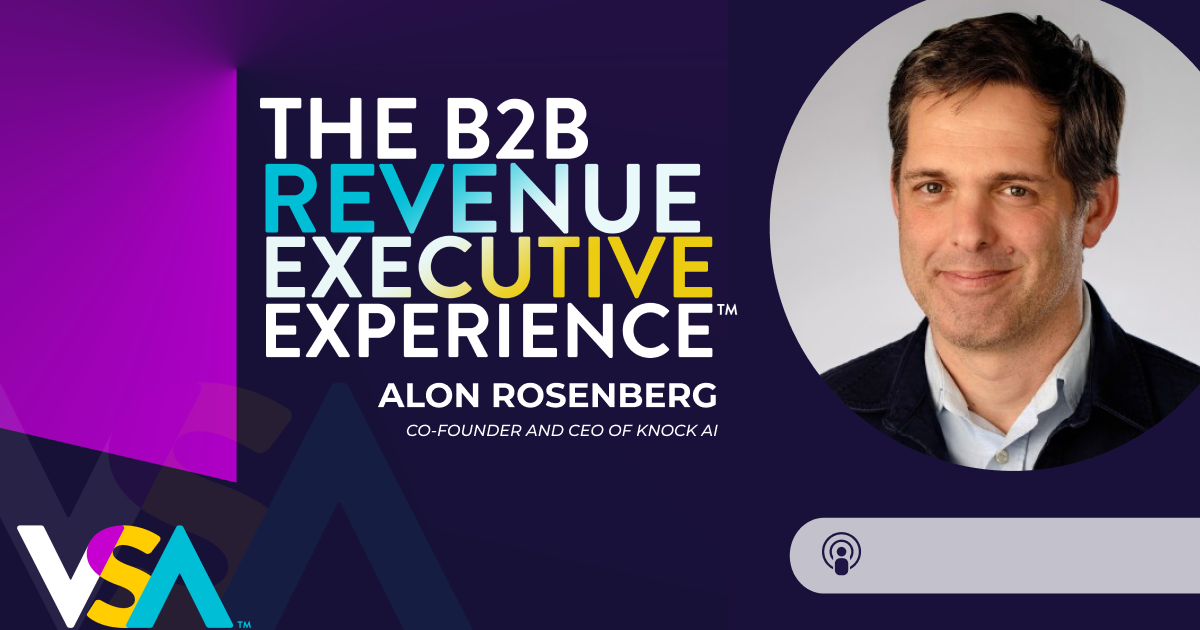The Power of a Value-Based Sales Methodology

– Subscribe to the Podcast or Write a Review: –
Spotify – Stitcher – Google Podcasts – TuneIn – Apple Podcasts
Prospects are bombarded daily with messages pressuring them to buy.
That can get pretty exhausting.
Even if you’ve got a product they need, people don’t buy products. They buy the results the product will give them.
You’re in sales; your job is to sell. I get it.
But what if selling for the sake of selling wasn’t your primary goal? What if providing value was your focus?
I caught up with repeat guest Robbie Traube, Chief Revenue Officer at subscription economy leader Zuora, to discuss the power of the ValueSelling Framework® for scaling sales organizations.
We also talked about:
- How Robbie started using the ValueSelling Framework®and his relationship with it throughout his career
- The biggest results Robbie has seen from relying on the ValueSelling Framework.
- How ValueSelling comes to life in an organization.
- How to ensure sales teams continue to apply sales frameworks in a virtual world.
The Benefits of ValueSelling
ValueSelling…what’s the big deal?
A value selling framework has several benefits: it cuts down time on forecast calls, helps your win rate, significantly increases the selling value of your deal, and vastly improves time to close because when you can articulate your value, you create urgency within your prospects.
There’s a simplicity to ValueSelling tools and tactics, but within that simplicity is incredible depth. It’s deeply personal, and forces you to really get to know your customer.
“From a SaaS perspective, as an enterprise SaaS company, you need to be thinking and getting your head around your customers as much as your prospects. The value you bring is the most important word in the whole sales motion.”
Robbie Traube at Zuora
When they wake up in the morning, what are their thoughts, what are their goals, what’s happening in their life? What are they thinking about, what is critical to them?
If you can understand that, then you can start to make sure that the communication you have with them is tied into what they’re thinking about, the terminology they use, and the goals they have.
How the Framework Works
The ValueSelling Framework basically requires that your organization has a standard terminology and a standard language that ties to your sales process and the value you bring to customers and partners.
From a SaaS perspective, you need to be thinking and getting your head around your customers as much as your prospects. If we’re not focused on bringing value to the individuals we’re talking to, we’re missing the mark. Customers want what they want, when they want it, how they want it, where they want it. If we don’t have a buying or selling motion that aligns with that, there’s a disconnect.
“If we’re not focused on what is bringing value to the individuals we’re talking to, we’re missing the mark, especially considering everyone today wants something that’s focused on them. If we don’t have a buying or selling motion that aligns with that, there’s often a disconnect.”
Chad Sanderson at ValueSelling Associates
When you tie value into your various staging and you have consistent language throughout, everyone on your team knows what you’re talking about. There’s less miscommunication and everyone understands the strategy and direction. You get so much more productivity, and a more precise forecast accuracy.
3 Tips for Implementing the ValueSelling Framework
- Your framework has to be adopted by leaders in your organization.
Your executive suite has to believe in the framework and reinforce it. When you get it all the way to your executive team, that reinforces that it’s not just part of your story, but that absorbing and implementing it is crucial. - Your framework has to be part of every part of your sales process.
Every stage of the sales process is defined around your framework. Whether you’re talking customer engagement or exit criteria, ValueSelling is woven into every stage. - Your framework has to tie to the other functions around you.
No process is an island. Let the product management team have some training on the model, let them understand and interact with it. They’ll be producing the content that aligns with the ValuePrompter® concepts, so involving them makes it easier and more fluid for the sales team to be able to leverage their deliverables.
Final Sales Tips
- Research your connection before you connect.
- Practice “reasonable persistence” when reaching out. (Don’t be annoying, but do follow up.)
- Give your salespeople the ability to work creatively.
- Take risks!
This post includes highlights of our podcast interview with Robbie Traube, Chief Revenue Officer at Zuora.
Subscribe to hear this episode and many more like it. For the entire interview, you can listen to The B2B Revenue Executive Experience. If you don’t use Apple Podcasts, we suggest this link.
Explore More









